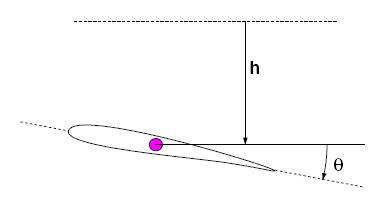

 |
 |

If Mach=0 is selected, the program uses Theodorsen's (1934) linearised potential solution for unsteady incompressible flows to compute the coefficients. Otherwise, when Mach<1, Lin and Iliff's (2000) approximate solution to the Possio equation is used. Finally, if Mach>1, the program computes the supersonic solution of the linearised potential equation using the approach of Garrick and Rubinow (1946). Note that results from the linearised potential equation are not accurate in the transonic regime.
Two types of output can be produced using the forms below. In both cases, a value must be provided for the centre of rotation. This is measured in chord lengths from the mid-chord position (e.g for rotation about the quater chord enter -0.25).
If you require more information,
contact
S.J.Hulshoff@TUDelft.NL.